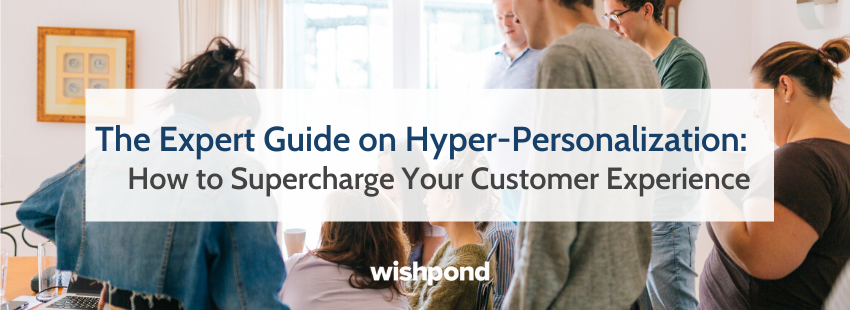Today customer service plays a major competitive differentiator. Just providing efficient or tailored service is not enough.
As customer touchpoints surge and a huge load of communication and information are targeted towards them, customized experience and personalized communication is the most effective way to grab your customer’s attention.
According to a recent report by Accenture, 75 % of consumers are more likely to buy from brands that offer personalized services fine-tuned to their individual preferences.
Consequently, more and more organizations are focusing on providing personalized service to their customers.
So, What Does Hyper-Personalization Mean?
Thanks to the introduction of big data, it has become easier to create a hyper-personalized experience for the customers. Now, companies can identify exact customer requirements and needs by utilizing behavioral data and emerging technologies help in interpreting individual characteristics.
Hyper-personalization is essentially the concept of collecting behavioral data of customers in real-time to customize services, products, and experiences based on their needs and wants. To achieve this, organizations must be able to have a clear interpretation of their consumers and products and also combine technology and data to devise a customized strategy.
“We consider customers as guests at our party. Our job is to make every aspect of customer-experience better with each day.” – Jeff Bezos (CEO of Amazon)
This statement indicates the importance of customer experience in any business that aims to scale the highest level of success. It shows the “customer-first” approach that hyper-personalization needs.
Another study shows that 86 % of consumers are willing to spend more for superior customer experience. Moreover, CX also impacts instinct purchases. As per Thomson Data, 49% of buyers made purchases on the go as a result of personalized customer experience.
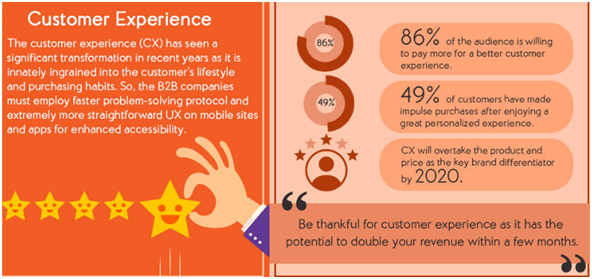
Hyper-personalization Benefits
Hyper-personalization is one of the topmost B2B marketing trend in 2020 due to its several benefits. It helps minimize the efforts made by customers to find what they want by eliminating any obstacles that may be present in the customer funnel, thereby offering a simplified and uncluttered shopping experience.
It also eliminates the “choice-overload” problem wherein you are overwhelmed because of the large number of options available. Considering around 39 % of buyers leave a site and make their purchase from a rival brand after being exposed to a wide number of options, you can solve this issue by opting for a more personalized approach.
Hyper-personalization can help in solving this issue by providing only those options that your customers actually need. Plus, as the average person has an attention span of 8 seconds, attracting a customer’s attention has become quite a hurdle. The overload of information that is being targeted to them makes it even more difficult. As such, hyper-personalized information is essential to save time and address customer pain points.

Hyper-Personalization vs. Personalization
Conventional personalization depends on personal as well as transactional information like purchase history, name, organization, etc. The most typical example of this is including the customer’s first name in the email’s subject line. This approach simply utilizes profiling to make specific assumptions regarding the customer on the basis of their characteristics.
On the contrary, hyper-personalization is a more evolved and complex approach that focuses on behavioral as well as real-time data like engagement data, in-application behavior, and browsing behavior. This leads to a more contextualized interaction, and ultimately results in greater conversion.
Four Ways to Use Hyper-Personalization
The present marketing scenario is highly fragmented. Customers spend several hours a day engaging with various media and in the process, come across hundreds of commercial messages. Hyper-personalization helps brands break through this noise by offering truly personalized services and marketing messages.
When organizations can develop an analytics-based hyper-personalization framework, their marketing campaigns become more efficient and effective and increase their lifetime customer value. The traditional approach requires companies to come up with the best engagement driving tactics, then examine and iterate manually.
On the contrary, hyper-personalization utilizes real-time data and artificial intelligence (AI) to offer more relevant information, service, product, and content to each client. For this reason, the hyper-personalization approach promises to improve engagement significantly.
While the decision to shift to a more personalized framework may be easy, the implementation can be quite complicated. In fact, according to a survey by Ascend2, only 9 % of marketers have been able to complete the implementation of their hyper-personalization strategy.

For most brands, technical hurdles seem to be the biggest challenge in their implementation process. To devise a hyper-personalized framework that is effective, ditching the traditional approach of focusing on just data is crucial.
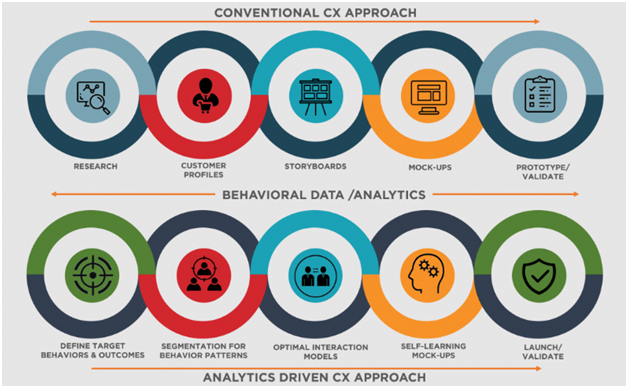
Here are some steps to develop a hyper-personalized strategy:
Data Collection: Gathering data is the most important step when it comes to creating a hyper-personalized framework. Without data, it will not be easy for you to identify your customers. An IBM report suggests that about 80 % of consumers believe that companies fail to address them individually.
If your organization caters to a large number of users, it can be quite difficult to determine the needs of each prospect. This is where gathering relevant and accurate data comes to play. An automated consumer engagement platform coupled with actionable analytics can be of immense help in collecting the required information for your company.
Customer Segmentation: The collected data will help you in understanding how customers engage with your brand. As such, you will be able to deliver truly personalized messages and customer experiences. However, without segmentation, the process of hyper-personalization is not complete.
You can divide your consumers into different subsets on the basis of various factors like brand interaction history, satisfaction, demographics, location, average spend, etc. You can get loyal and engaged customers only when you integrate data and segmentation.
Targeted Journeys: After identifying and segmenting your clients, you can move on to hyper-personalized communication. Getting hold of the right channel along with the right time is essential for success. When you have more relevant and targeted communication with the customers, you will have more possibilities of conversions.
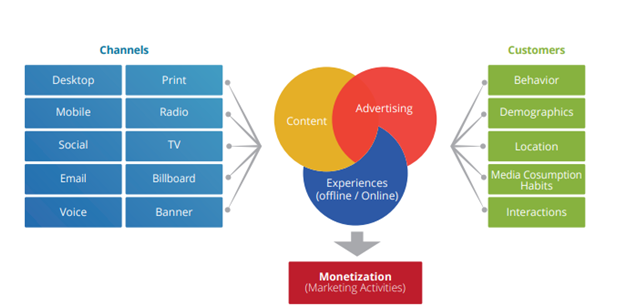
Measurement and Analysis: It is not enough to just run a targeted campaign. It is crucial to evaluate the campaign’s success too. Focusing on the vanity metrics won’t be of much help in the future, however looking at the metrics that will impact the bottom line of your company will. Once you determine the specifics of which marketing strategy affects your revenue directly, you can recreate it for continuous results.
For instance, influencer marketing strategy is a formidable strategy that can be evaluated and used with various platforms.
Organizations should also be open to experiment and take risks. Therefore, agile methods are important for creating quick blueprints with short cycles, allowing companies to course-correct if there is a low marketing ROI or poor campaign performance.
Data gathering needs to be ramped up too as it will allow you to offer hyper-personalized consumer journeys. The approach should focus on determining what will improve individual interactions, what data to be used, and identify the right method for acquiring the data.
Real-Life Examples of Hyper-Personalization
Amazon Personalization with AI
Amazon leverages the several data points it collects through predictive personalization utilizing emerging technologies like AI and Machine Learning.
Some of these data points are first name, search query, average time spent on search, past purchase history, category browsing tendencies, time spent in past purchases, average amount spent, and so on.
Amazon also has an algorithm for product recommendation called item-to-item collaborative filtering. This algorithm gives product suggestions based on:
- Items in the shopping cart
- Purchase history
- Rated and liked items
- Liked and purchased items by similar customers
There was a customer searching for running shoes in olive green color but left without purchasing. So, Amazon then applied item-to-item collaborative filtering and came up with the following hyper-personalized one-to-one email.

As a result of this, more than 35% of Amazon’s conversion has been due to the personal recommendation engine since it creates exclusive, hyper-personalized experiences for every consumer.
The “Discover Weekly” and “Live Concert” Feature by Spotify
Spotify creates a highly-personalized playlist for its users where each user is recommended songs based on individual choices of music. These individual choices are then cross analyzed with other users who have been listening to the same song leveraging predictive personalization to present the “Discover Weekly” hyper personalized playlist as follows:

Spotify revealed that after launching the “Discover Weekly”, its user-base increased by 40 million users and also resulted in the streaming of 5 billion tracks.
Also, the numbers for “Discover Weekly” showed that more than half of the users of the playlist listen to a minimum of 10 of the tracks every single week and have saved at least one of the songs.
Based on individual music preferences and that of the others, Spotify harnessed the power of predictive analytics once again and also came up with a Live Concert feature, which sends emails about live events to users with their favorite artists. There is also an option available to buy tickets:
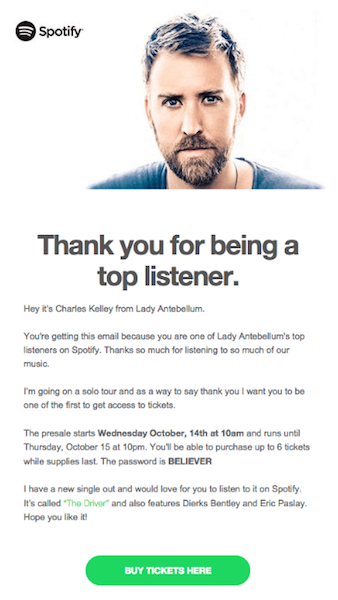
Concerts became an important space in which Spotify invested. Moreover, global live music revenue is a whopping $25B which is quite larger than digital streaming, and it is also pretty fast-growing.
Spotify has also been investing significantly in Podcasts, which is about $350–400M.
By playing their hand in concerts discovery, Spotify easily earned affiliate revenue from the likes of Ticketmaster, AXS, etc. Spotify also made profit by offering concert analytics to artists or record companies. With the help of analytics, valuable insights were shared among them such as what songs are the most popular among concertgoers as compared to the general listeners.
Netflix’s Personalized Thumbnails
Netflix uses an algorithm that leverages predictive analytics and serves images and content based on user behavior to offer personalized thumbnails for every show. Users of Netflix who share an account to create their profiles receive better, personalized, and targeted recommendations. Not only does it keep the viewers engaged, it also helps them to enhance their upsell.

Another interesting aspect of Netflix’s hyper-personalized recommendations is that it can distinguish one user from another and isolate their preferences. So for instance, you are interested in the Romance genre and your better half in Horror, neither of you will be able to realize each other’s preference, unless you blow the lid off yourself.
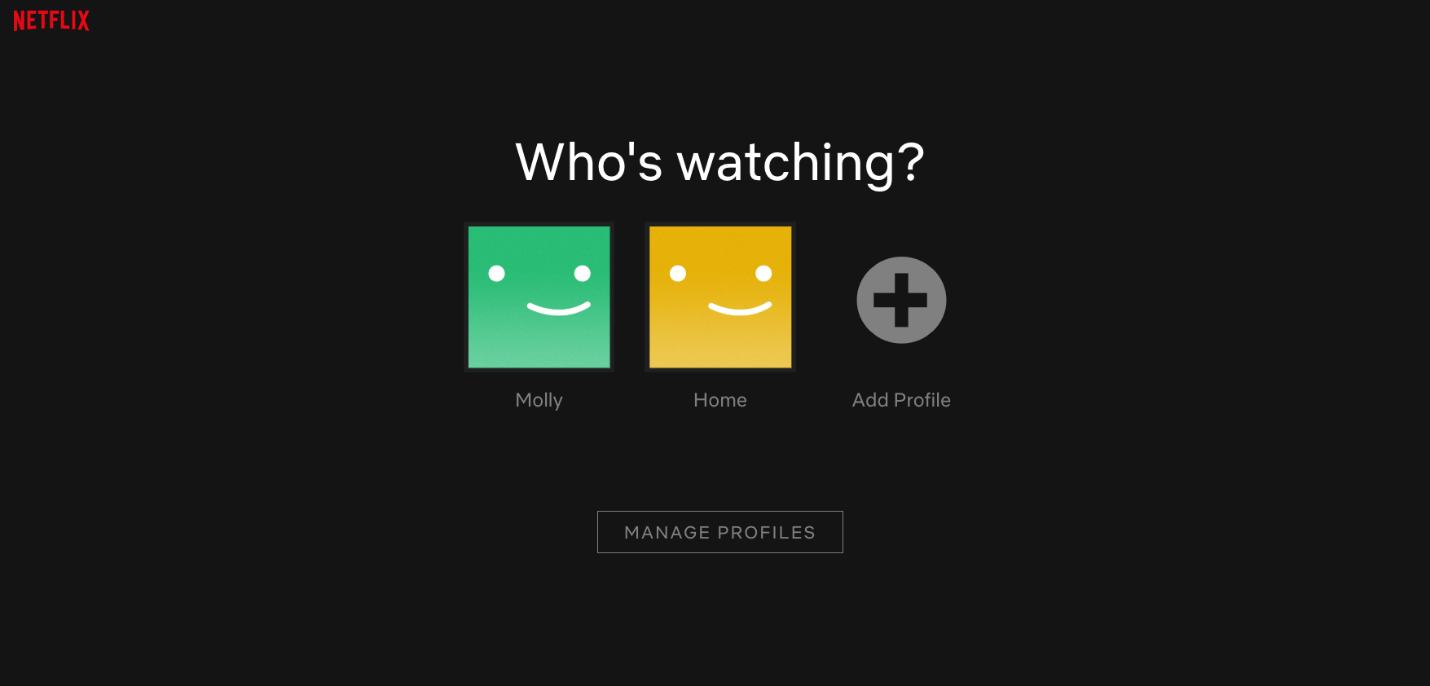
Netflix executives stated that its AI assisted hyper-personalization recommendation system saves the company $1 billion per year.
Also, in the future, Netflix was confidently able to spend a huge sum of $6 billion a year on new content, since they were confident that their viewers will munch enough overtime to provide them healthy ROI.
Starbuck’s Push and In-app Notifications
Starbucks leveraged hyper-personalization through AI and used real-time data to deliver 400,000 alternatives of hyper personalized messages about offers in food and beverages to users. Based on the past activity of the users on the application, unique messages were sent to use like the following:
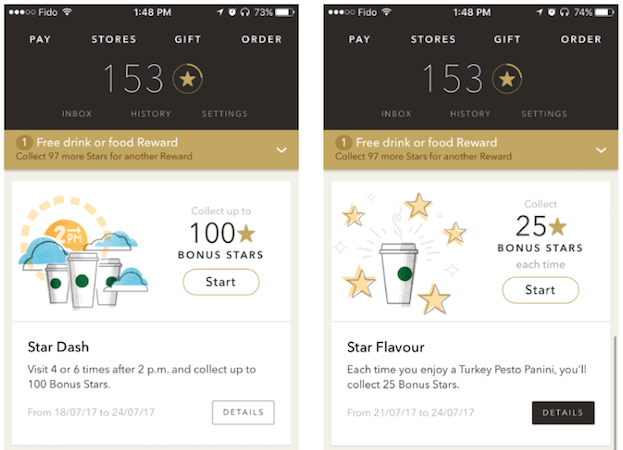
Gamification has become an important means of engaging users and Starbucks engages loyalty program members with games on their email and mobile platforms which are personalized as well.
Using predictive analytics on the huge amount of data collected from the users, it informed its mobile app users about the stores in their vicinity in which Mobile Order & Pay option is available:
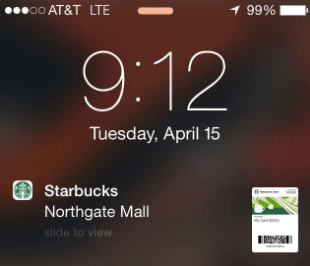
The result from Starbucks’ campaign in brief:
- Marketing campaigns found to be three times more effective.
- Email redemption doubled.
*Incremental spends via offer redemptions increased by three times. - The total business coming from the mobile app was 24%.
Conclusion
As the number of self-service interactions and communication channels rise, the expectation of the customers to receive a personalized experience through-out their marketing journey increases too.
As a consequence, by opting for a hyper-personalized approach, you will not just be able to offer better experiences to your customers but also gain greater ROI.
That said, to develop an effective hyper-personalized strategy, it is crucial to define intended behaviors and goals for the target audience. Lastly, it is crucial to ditch the traditional CX approach.
About the Author

Clara Beck is a Business Manager with 8 years of experience at Thomson Data based out of Plano, Texas. She helps SMBs and Enterprise firms take full advantage of the latest marketing tools to scale up their business. She blogs about Small businesses, Marketing, CX, Entrepreneurship, Big Data and, other technological innovations. Connect with Clara on LinkedIn

